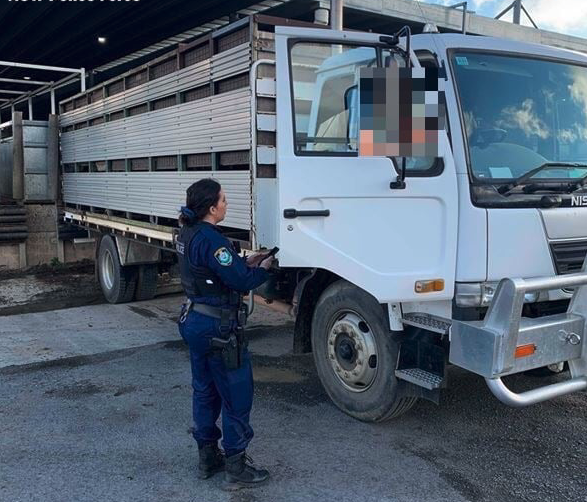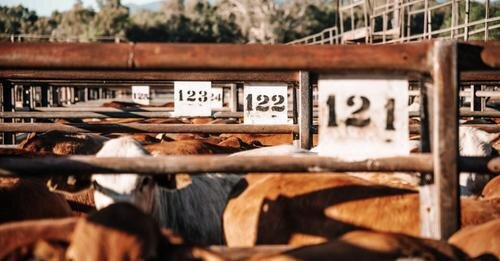How often have you seen livestock for sale on social media or online platforms? As people grow more used to online shopping, it’s probably only natural that livestock are starting to be advertised more frequently. I have lost count of the number of people who tell me they have seen cattle for sale on websites such as Gumtree. Even more frequently, sales pages on Facebook with groups located in regions or for broad livestock sales always seem to have cattle for sale.
While there is nothing technically wrong with buying and selling livestock online, there are several significant differences to consider as opposed to selling general items. For potential purchasers its important to be aware of both the risks of online livestock purchases and to understand your legal obligations associated with livestock purchases.
Online listings are more frequently appearing across social media
As a livestock seller, you do have certain obligations to comply with - regardless of the method you use to sell livestock.
You must have a Property Identification Code (PIC). In NSW anyone who keeps or owns livestock is required to ensure the land where the livestock are kept has a Property Identification Code or PIC. 'Livestock' includes one or more cattle, sheep, goats, pigs, deer, bison, buffalo, camelids, equines (i.e., horses and donkeys), 100 or more poultry birds or 10 or more emus or ostriches. If you are unsure about you PIC or have yet to acquire one, you should contact the NSW Local Land Services. In other states, you can contact your local office of the Department of Primary Industries.
You should be registered and accredited under the Livestock Production Assurance (LPA) Program. Participating in this program ensures you have considered and are managing the areas of risk that may impact on food safety - particularly if your animals are sold for consumption at a later point in time. Contact the LPA Helpline on 1800 683 111 or visit the website
You will need to provide a National Vendor Declaration to the purchaser of your livestock. The NVD also acts as a Waybill or Transported Stock Statement. These documents are essential in order to move cattle legally from property to property, as well as providing advice on health and feeding history of the stock.
An NVD is required to move cattle to another property
4. To legally move cattle (or sheep) you are required to have them identified with approved National Livestock Identification System (NLIS) tags or devices. Your devices can be ordered through your local rural merchandise store, but before you can order you will need and NLIS account.
5. Before you actually move your livestock, they have to be tagged!
Check you have tagged all your animals with an approved NLIS device
Other Documentation you may need to consider
In NSW, Transported Stock Statements (TSS) are required for any movement of stock where an NVD is not required (eg transporting stock for agistment or to attend a local agricultural show). This also includes moving horses, and you can obtain specific TSS Horse forms from the LLS. In other states Waybills are required and act in the same way as a TSS. Waybills are usually only used when animals are being transported from one place to another where no sale has occurred.
Animal Health Statements
Animal health statements for cattle, sheep and goats are not mandatory in NSW. However they may be required for some stock movements, especially interstate. If you are selling online you may find your animals purchased by someone from another state and you must supply the completed form. These forms can be downloaded from Animal Health Australia
“How much should I ask for my stock”
Setting a value on your stock can also be a challenge. Many people overinflated the value of their animals. Realistic prices should be set on the class of animal that you are planning to sell, and ideally you would work from an average of that class of stock based on reports from local sales, and online auctions such as AuctionsPlus.
Being realistic about a price is a challenge for many producers! While we all hear of the top figure reported for cattle, that may only be one pen out of a sale. So using averages is more realistic and likely to avoid not selling at all.
Managing Risk
Online selling through unregulated platforms is a risk. Many people choose to sell online to avoid agents commission, sale yard fees and other costs. However it’s important to consider if avoiding these costs exposes you to a greater loss.
Stock & Station Agents carry insurance to cover the risk associated with non payment. Using a registered & licensed agent can offset that risk. Using an agent doesn’t mean you cant sell on line or direct to another producer. If that is the way you want to sell stock you can advise your agent accordingly.
Buying Online
What should you consider?
Buying online from social media or sales pages such as Gumtree is a more risky strategy to acquire livestock. There are several important things to consider from both a legal position as well as from your own approach to purchasing stock.
Legally you are required to receive the National Vendor Declaration (NVD) and keep it on file for a period that can be as much as 7 years.
You are also required to transfer those on the NLIS database from the property or origin to your own PIC.
Many people choose to buy and sell this way to avoid these legal requirements. There are some real risks in doing this. Firstly if you are stopped by the Police and requested to provide a movement document the penalties for not having one can be very significant.
The other risk comes when those animals are to be sold in turn. Chances are these animals may not be sold on line again. And if they are to be sold through a Saleyards or to another destination, the lack of NLIS devices or NVDs may prevent them being sold.
Its also important to remember that it only takes one animal that has a chemical residue from soil contamination or a health treatment that was not declared, to impact on market access. So having animal history, including feed and health treatments is vital.
Purchasing online is a challenge in terms of risk also. you are essentially buying from a stranger. So you need to know:
Do the cattle even exist?
Are they what you expected?
Is the price realistic?
These are just starting questions, but you should ask them before you think about purchasing them. While you are thinking about these points, have you thought about:
What pests, diseases or weeds could these cattle have? Are there burr seeds in the coats or noxious weeds they could spread?
How quiet are they? Have they been handled much?
How old are they?
Often these basic questions are overlooked and the result can be anything from old cattle that look nothing like the picture to feral cattle that don’t want to be yarded or handled in a safe way!
Is the temperament really what you expected?
Before spending money to be cattle online, ask these questions or even better go and look at them first! A legitimate seller will be happy for you to inspect them prior to purchase. If the cattle are too far away, again it might be worth considering asking an agent to do so on your behalf. Remember the long term cost of a bad decision will outweigh savings you might make doing it yourself.
“Remember the long term cost of a bad decision will outweigh savings you might make doing it yourself.”
Ultimately, it is unlikely that livestock sales online are going to fade away. It’s probably more likely that they might increase. Either way, before you buy or sell, just remember that while you may be using the internet to make the process more convenient, you cant overlook your obligations or the risks. Asking the right questions and being part of the system not only protects you, but also protects the industry which keeps us all in business! It only takes one animal to bring us undone!















